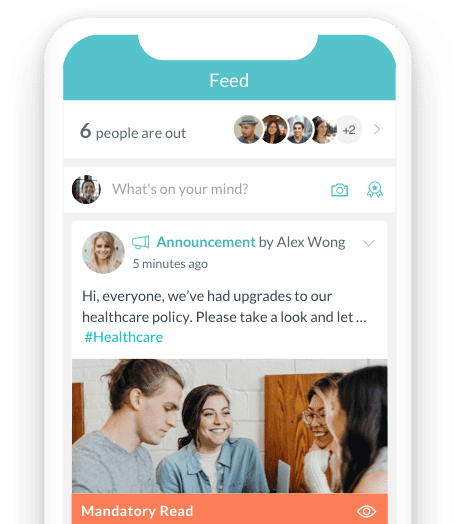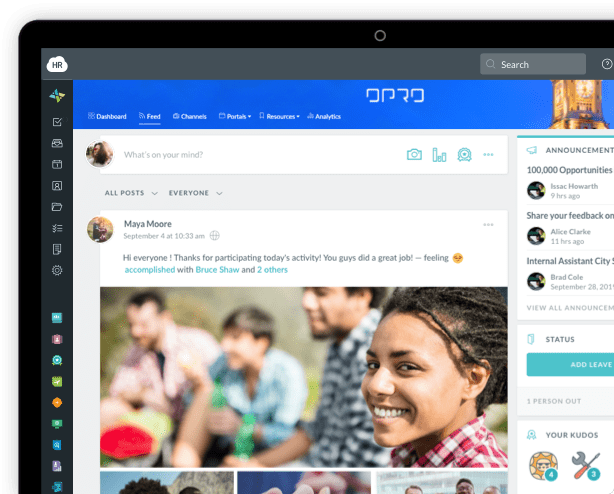Why Embracing Diverse Work Styles Is Your Leadership Superpower
.png)


 Cut onboarding time
by 60%—here's the
Ultimate Checklist
that helped do it.
Cut onboarding time
by 60%—here's the
Ultimate Checklist
that helped do it.

Consider what it takes to create groundbreaking technology, like an Artificial Intelligence (AI) tool that will change how people work or a social media app that connects us all. First, there’s the idea. Then, there’s the plan to bring the concept to life. The execution of the plan follows, and tests then come next to ensure the new product is ready for the real world.
Though this description is far simpler than reality, it’s complicated when you expect one person to take on all these roles. However, for most software development teams, that’s not the case. There isn’t just one person playing all these parts, nor is every person fulfilling every role, which would result in redundancies and each person potentially stepping on another’s toes.
Instead, the ideal software development team has people fulfilling distinct duties according to their work styles. You’ll often have someone who is a “big picture” person, a risk taker who wants to create the next big thing. But you’ll also have others who keep those ideas grounded, helping the vision to succeed in the real world.
Others still focus on minor details, knowing big ideas have many minuscule features that some may overlook. Having a team of all these different work styles creates balance, helping you set realistic expectations while continuously improving.
This ideal balance helps software development teams, but this mindset is beneficial to more than just one team. By embracing different work styles in your company, you allow each person to hone their strengths and bring their perspectives while others help mitigate their weaknesses.
It’s also a good idea to add automation into the mix, when possible, and where it makes sense so your teams don’t get bogged down in too many manual tasks when their lives could be made easier through automations.
How can you, as a leader, make these different work styles help your company thrive?
Let’s examine how embracing diverse work styles can become your leadership superpower.
Harnessing the Power of Diverse Work Styles
The working world has seen many changes quickly, with one of the most significant changes being what workers expect from their management team. The results are particularly evident in two studies conducted by consulting firm Gartner.
In a survey of more than 230 HR leaders, 90% said leaders must focus on the human aspects of leadership. But another study of nearly 3,400 employees found only 29% said their leader was a “human leader.”
The two surveys demonstrate a gap between expectations in this new working world and reality.
A human leader, as defined by Gartner, exemplifies three traits. The first is authenticity. A human leader will demonstrate and encourage self-expression. The second is empathy. Such a leader will show genuine care for their employee’s well-being. The final is adaptability, which means the leader will find ways to support the unique needs of every team member.

Leaders can demonstrate all three traits by embracing their team’s working styles. By encouraging self-expression, their team can feel comfortable working in the best way for them. Meanwhile, a leader can show empathy and flexibility by finding ways to ensure everyone has the tools they need to reach their full potential according to their working style.
A humane leader helps your team feel more supported and understood, making them happier with their work and lives.
However, embracing different work styles goes beyond personal happiness and an improved company culture. Doing so can also help you boost innovation and productivity. Allowing people to work according to their work styles means enabling them to work according to their strengths. Our unique strengths are what build our work styles. Some people are idea generators, always looking for the next big thing. Others are more detail-focused. More still are great communicators who help break down barriers between the idea generators and those who help make those visions a reality.
These work styles came to be because of certain employee personality traits.
Everyone has a unique set of strengths, and the best way for them to do their jobs is to let those abilities shine. According to a survey by Gallup, when people are allowed to work according to their strengths, they are six times more likely to be engaged in their jobs.
A lack of engagement costs you in several ways.
According to Gallup’s State of the Global Workplace: 2023 Report, employee engagement is recovering after a significant decline following the COVID-19 pandemic. However, as of 2022, the number of people engaged at work is still relatively low, with only 23% reporting high engagement. Employees not engaged at work cost the world $8.8 trillion, or 9% of the global GDP.
McKinsey’s research breaks this cost down further in their findings that a median-sized S&P 500 company loses between $228 million and $355 million a year due to employee disengagement. According to McKinsey’s findings, most employees fit a particular set of archetypes. These archetypes can either bring in value or destroy it. It’s on management to change one employee’s archetype for another.
Those actively disengaged and likely to encourage disengagement in others are considered disruptors. While they only make up 11% of the workforce in a typical organization, 32% fall into the mildly disengaged category, who only do the bare minimum.

Those who are going above and beyond make up 38%. These workers are particularly motivated by meaningful work in a workplace where others are open to collaboration. Collaboration is a natural byproduct when you celebrate and encourage diverse working styles.
By supporting different working styles, you’re boosting engagement, which may help move the disruptors and the mildly disengaged into the category of those going above and beyond instead. And by fostering collaboration, you’re helping those who are already engaged to feel understood at work, which can make them even more productive.
When you allow people to work according to their work styles, you tap into the potential others may have ignored. Employee strengths are a lot like muscles. They atrophy when they’re underutilized. While others may have looked at those workers and believed they were not up to par, it was an under-use issue. It’s now up to you to determine their working styles to assemble the puzzle pieces for positive collaboration.
Take time to get to know your employees and evaluate their strengths and weaknesses. Consider having them take surveys designed to find their proper working style.
Once you know your employees’ working styles, you can build better teams, with each uplifting the others.
Working Styles and Your New Workplace
When you build a go-to-market strategy, you need to understand your customers’ preferences and needs. It takes time to study those requirements to make data-driven decisions that will create a successful go-to-market strategy.
Effective leadership requires you to do the same for your employees. What are their needs in the workplace? What are their preferences for collaboration? Each team consists of unique personalities. Some people mesh well together. Others might butt heads. More still might accidentally fulfill the same role and create redundancies that lower productivity and profit.
When you develop a go-to-market strategy, diversity is a strength, not a weakness, as you understand your target customer is likely not just one person. You’ll likely have many people of different backgrounds interested in your product or service. In the same way, employees come from different places and mindsets when they become a part of your organization.
Embracing diversity in working styles leads to greater engagement in the workplace because you’re treating your employees as people rather than simply cogs in what you’re hoping to be a well-oiled machine.
We need more human leaders in today’s world - people who understand we have differences, and those differences are something to use to your advantage. The more you celebrate the diverse strengths of your employees, the more likely you’ll have a happier, more inclusive workplace, which can translate to better products, better collaboration, and higher growth.
Author Bio:
This article is written by a marketing team member at HR Cloud. HR Cloud is a leading provider of proven HR solutions, including recruiting, onboarding, employee communications & engagement, and rewards & recognition. Our user-friendly software increases employee productivity, delivers time and cost savings, and minimizes compliance risk.
Keep Reading
45 Boss Day Messages That Actually Mean Something (2026 Guide)
When is Boss Day 2026? Mark your calendar for October 16, 2026 — the annual opportunity
Birthday Wishes for Coworkers: 50+ Messages That Build Workplace Connection
A coworker's birthday isn't just another calendar date—it's a meaningful opportunity to
Embracing Diversity: Recognizing Different Cultures in the Workplace
Workplaces today reflect the incredible diversity of the world around us. People bring
Like What You Hear?
We'd love to chat with you more about how HR Cloud® can support your business's HR needs. Book Your Free Demo

Build a Culture of Recognition. Boost Engagement. Guaranteed.
Workmates empowers employees to stay informed, connected, and appreciated—whether they’re on the front line, in the office, or remote. Recognition drives 12x higher engagement.Trusted by industry leaders in every sector




Cut Onboarding Costs by 60%.
Take the confusion and follow-ups out of onboarding with automated workflows, digital forms, and structured portals—so new hires ramp faster 3X quicker.Trusted by industry leaders in every sector






